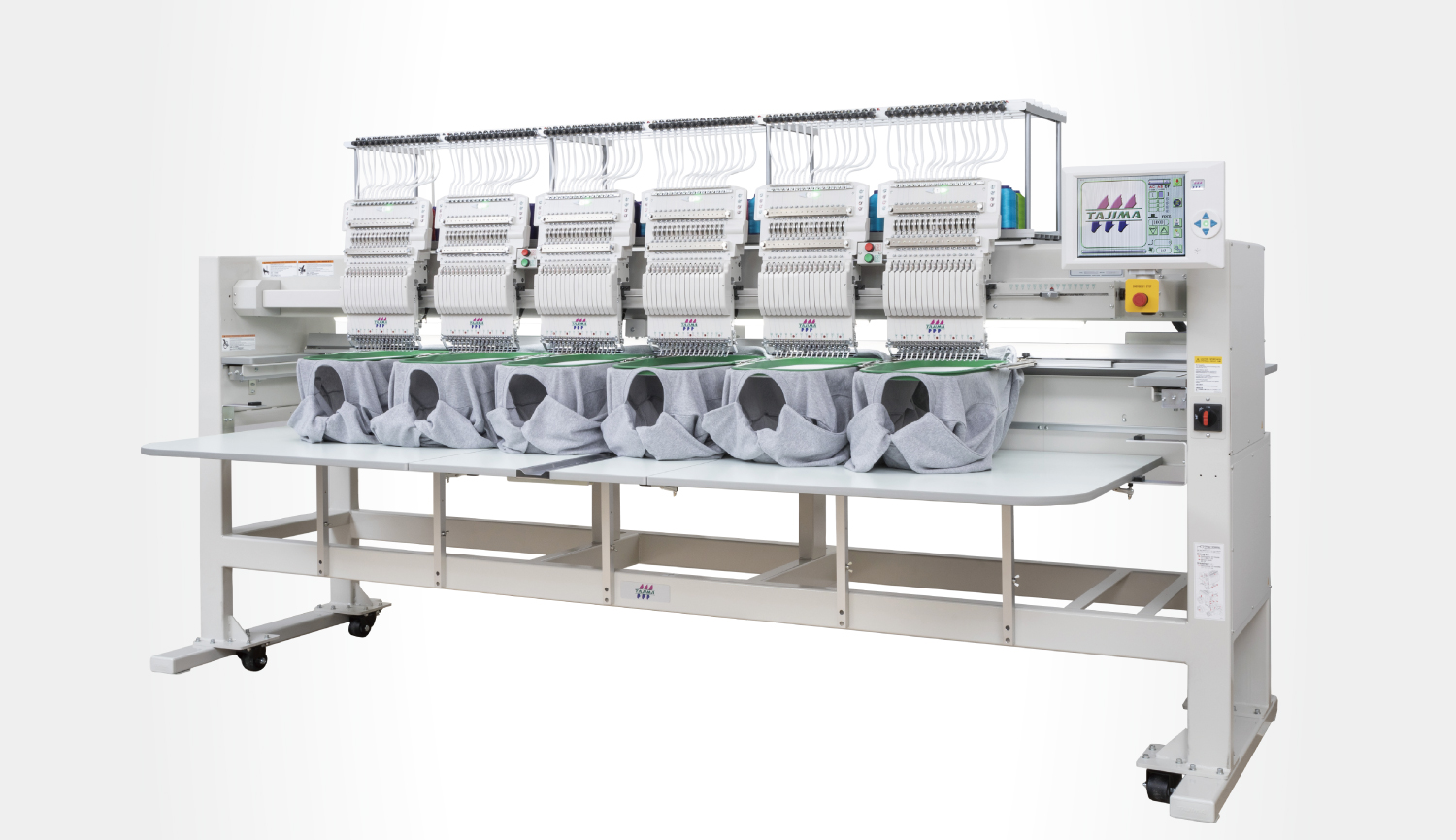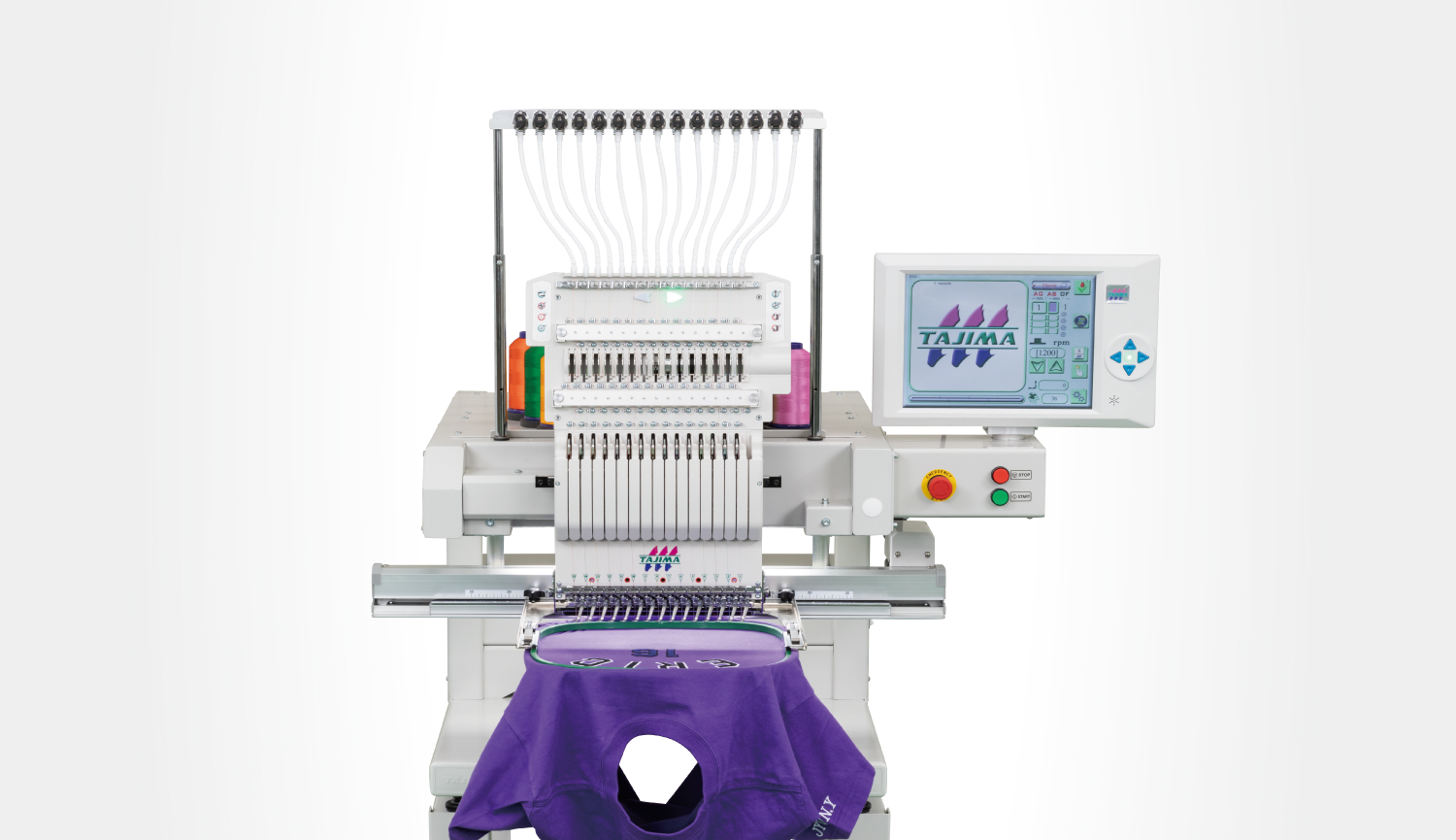Hit Promotional Products, a leader in the U.S. promotional products industry, has achieved remarkable gains in productivity and efficiency through its partnership with Tajima. We spoke with CEO CJ Schmidt, who was named Counselor magazine’s Person of the Year 2024, and his team about the company’s transformation — from upgrading equipment and integrating Pulse ID to shaping future growth strategies.

$800 Million Growth Story: How Hit Promotional Products Scales It Up with Tajima Technology
Hit Promotional Products CEO CJ Schmidt
Hit Promotional Products
Founded in the late 1970s as a small company dealing in accessories such as belt buckles and keychains, Hit Promotional Products has since expanded into the embroidery business and grown into one of the leading promotional product companies in the United States. Today, the company operates more than 1,000 embroidery heads and generates annual sales of around $800 million.
Behind this growth, however, the company faced challenges such as the aging of its older-generation non-Tajima embroidery machines and the discontinuation of parts supply as its operations grew. To overcome these challenges, the company chose Tajima’s total solution that integrates hardware and software. The introduction of “i-TM,” Tajima’s proprietary AI technology that automatically adjusts upper thread tension, and “Pulse ID,” a system that provides comprehensive support for the embroidery supply chain from order receipt to production, has dramatically improved productivity and stability. These technologies have provided strong support for the company’s continued growth.
How has Hit Promotional Products grown over the years?
We started in the late 1970s as a small business dealing with items like belt buckles and keychains. In the early 1990s, we entered the embroidery business by acquiring a company run by a family friend, and that decision changed the course of our business. At that time, we operated only 24 to 36 embroidery heads, but over the years we have expanded to more than 1,000 heads. Our revenue has grown from tens of millions to around $800 million. What started as a small embroidery operation on hats and polo shirts has now become one of the largest promotional products businesses in the United States.


What challenges did you face before introducing Tajima embroidery machines?
Before switching to Tajima, we used machines from another manufacturer. As they aged, parts became unavailable, and despite the efforts of our skilled technicians, downtime due to parts shortages was becoming a serious risk. It limited our production capacity and made it harder to respond quickly to customer needs.
When business grew strongly during the COVID period, we decided to take the opportunity to modernize our equipment. We invested in Tajima’s latest machines, which gave us the speed, capacity, and efficiency we needed to continue scaling our business.
What changes did you see after introducing Tajima machines?
The impact was immediate. The new machines run faster and more smoothly, and thread breaks have been significantly reduced. As a result, trimming work that previously required 50 to 60 people can now be handled by just five or six, dramatically reducing labor costs and improving operational efficiency. The i-TM function, which automatically adjusts upper thread tension, has also made machine operation much easier. New staff can quickly become productive, and overall operator workload has decreased.
In addition, the introduction of Pulse ID has significantly streamlined our production process. We no longer need to transfer data via USB or manually configure designs — scanning a barcode is enough to load the correct data to the machine. This has reduced the number of thread changes, improved operating efficiency, and lowered the workload for our crew. The network connectivity also allows us to monitor the status of each machine in real time, and we are considering how we might use this data to improve job allocation in the future.

How much has production improved since the switch?
Our daily output has increased from about 30,000 pieces to approximately 50,000 pieces. That growth in production capacity, combined with the improved stability of Tajima machines, means we can now guarantee delivery times with much greater confidence — a major advantage in our business. We are also extremely satisfied with the support from Tajima, Tajima Software Solutions, and our U.S. distributor, Hirsch Solutions. Technicians respond quickly, and parts are stocked locally, so downtime is very rare. This strong service network has allowed us to maintain stable operations and meet customer demands without disruption.
How do you handle the fast-changing demands of the promotional products business?
Our business is highly event-driven, and customer needs change quickly. One day we might receive an order from an animal welfare organization, and the next from an auto shop that needs products the following day. Flexibility and speed are critical to meeting these demands. Tajima’s technology and Pulse ID make that possible. We can group similar orders, manage jobs more efficiently across the network, and handle diverse, short-deadline projects simultaneously. This approach minimizes downtime, simplifies job allocation, and helps us respond quickly to our customers’ evolving requirements.


What are your future growth plans?
In addition to high-volume production, we are focusing on expanding our on-demand (POD) business, which now handles around 400 to 500 individual orders per day — and that number continues to grow. We are also actively entering the medical scrub uniform market, partnering with a company in Ohio to establish a system capable of delivering products in about an hour. As these new business areas continue to expand, we plan to further strengthen our operations by adding more single-head machines. Our strong partnership with Tajima and Hirsch Solutions — built on rapid response, close collaboration, and continuous improvement — will remain a key driver of our business growth.







